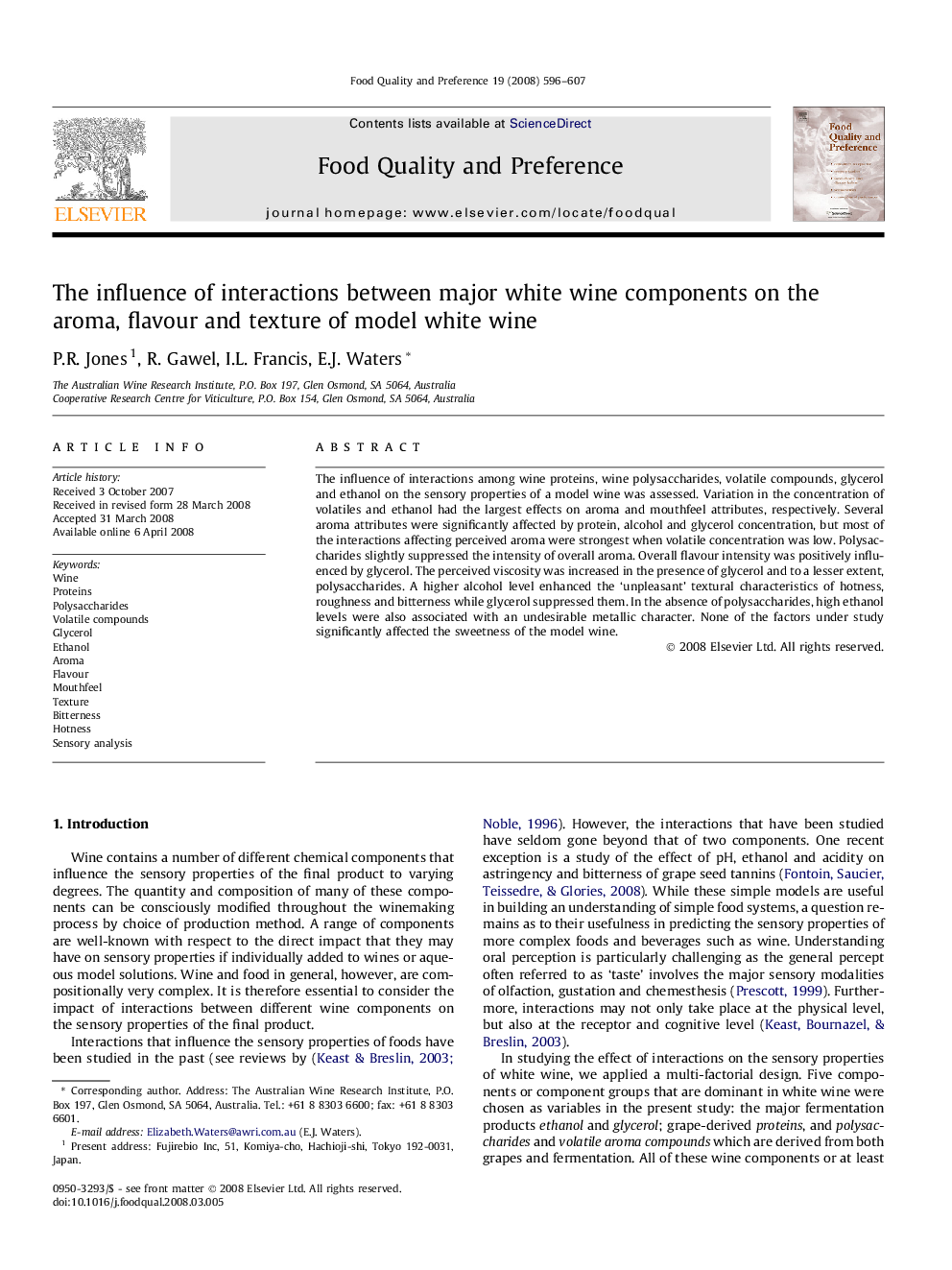| Article ID | Journal | Published Year | Pages | File Type |
|---|---|---|---|---|
| 4317981 | Food Quality and Preference | 2008 | 12 Pages |
The influence of interactions among wine proteins, wine polysaccharides, volatile compounds, glycerol and ethanol on the sensory properties of a model wine was assessed. Variation in the concentration of volatiles and ethanol had the largest effects on aroma and mouthfeel attributes, respectively. Several aroma attributes were significantly affected by protein, alcohol and glycerol concentration, but most of the interactions affecting perceived aroma were strongest when volatile concentration was low. Polysaccharides slightly suppressed the intensity of overall aroma. Overall flavour intensity was positively influenced by glycerol. The perceived viscosity was increased in the presence of glycerol and to a lesser extent, polysaccharides. A higher alcohol level enhanced the ‘unpleasant’ textural characteristics of hotness, roughness and bitterness while glycerol suppressed them. In the absence of polysaccharides, high ethanol levels were also associated with an undesirable metallic character. None of the factors under study significantly affected the sweetness of the model wine.
